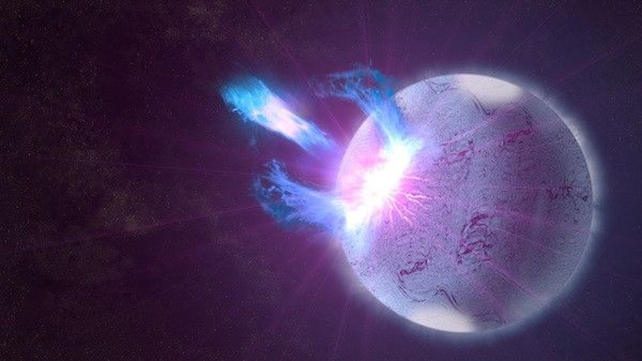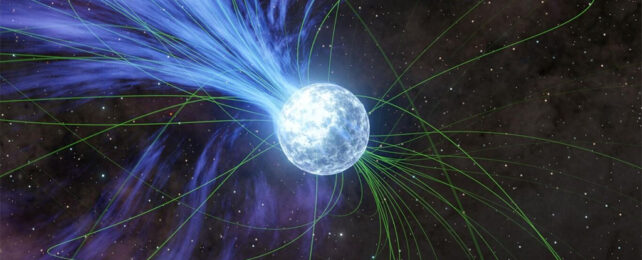Scientists have long been trying to determine how elements heavier than iron, including gold and platinum, were first created and scattered through the Universe, and new research may give us another part of the answer: magnetars.
Rare, giant flares erupting from these highly magnetized neutron stars could contribute to the production of the heavy elements, based on a fresh analysis of a magnetar burst captured in 2004.
The full story of that burst wasn't understood at the time. The latest work, from an international team of scientists, suggests the flash of gamma ray light captured back then originated from heavy elements being shot out into space.
'Starquakes' can fracture the magnetar's crust, forging heavier elements in the process, the team says. Giant flares can follow, distributing the newly minted elements into the cosmos.
Although the burst only lasted a few seconds, it would have produced around a third of Earth's mass in heavy metals, the researchers estimate.

This means we potentially have a solution for two mysteries in a single new study.
"It's answering one of the questions of the century and solving a mystery using archival data that had been nearly forgotten," says astrophysicist Eric Burns, from Louisiana State University.
Ultra-dense neutron stars are formed as massive stars run out of fuel in their core, imploding in on themselves. Some of these turn into magnetars, with extraordinarily powerful magnetic fields around a trillion times more powerful than Earth's.
There's another source of heavy elements that we already know about: neutron star mergers. However, they're not thought to be enough to account for all the gold, platinum, and other metals we have – these heavy elements appear too early in the Universe's history, before these collisions would have started occurring.
That led the team to magnetar flares. A 2024 study, from some of the same researchers, outlined how these intense bursts might be enough to trigger one major process required for heavy elements to form, called the r-process.
This study predicted that heavy elements being forged in this way should produce detectable gamma ray bursts. The researchers explored existing observations that could fit the bill, and this led them to the unexplained 2004 burst.
"The event had kind of been forgotten over the years, but we very quickly realized that our model was a perfect fit for it," says astrophysicist Brian Metzger, from Columbia University in New York.
There's a lot more to come. NASA is currently working on a wide-field gamma ray telescope, the Compton Spectrometer and Imager (COSI), which should be able to back up the findings of this research. In the meantime, the search for more sources of heavy elements continues.
"It's pretty incredible to think that some of the heavy elements all around us, like the precious metals in our phones and computers, are produced in these crazy extreme environments," says astrophysicist Anirudh Patel, from Columbia University.
The research has been published in The Astrophysical Journal Letters.
